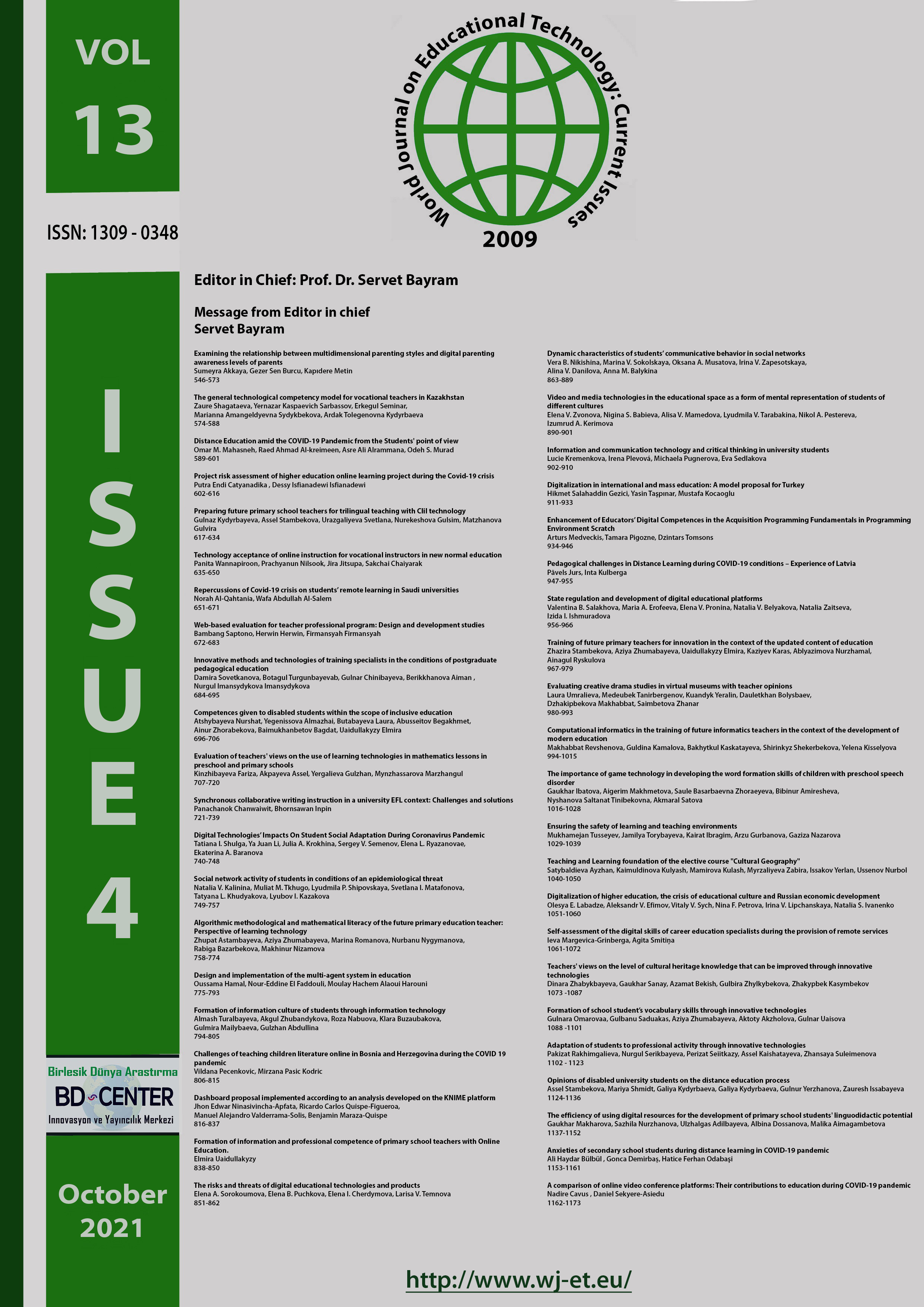The efficiency of using digital resources for the development of primary school students' linguodidactic potential
Main Article Content
Abstract
The aim of this research is to evaluate the effects of education given through digital resources on the language didactic potential of students with the views of teachers. 40 primary school teachers who teach 1st-4th grade students in various provinces of Kazakhstan participated in the research. In the research, case study, which is one of the qualitative research methods, was used. The research data were collected through a semi-structured interview form prepared by the researcher in order to get the opinions of the teachers who voluntarily agreed to participate in the research. Research data were analyzed by content analysis technique. As a result of the research, it has been determined that teachers are prone to use technology and partially use digital resources in their lessons. However, teachers stated that they are more open to the use of digital resources if the opportunity is given. In addition, although most of the teachers state that the use of digital resources has no effect on increasing the workload of the teacher, some define it as a workload. Teachers, who believed that it partially increased teacher success, stated that it had a positive effect on student success and student motivation. Research findings reveal that teachers need to receive supportive training on the use of digital resources in education.
Keywords; Digital resources, use of technology in education, linguodidactic potential of students, primary school teachers
Downloads
Article Details

This work is licensed under a Creative Commons Attribution 4.0 International License.
World Journal on Educational Technology: Current Issues is an Open Access Journal. The copyright holder is the author/s. Licensee Birlesik Dunya Yenilik Arastirma ve Yayincilik Merkezi, North Nicosia, Cyprus. All articles can be downloaded free of charge. Articles published in the Journal are Open-Access articles distributed under CC-BY license [Attribution 4.0 International (CC BY 4.0)].
Birlesik Dunya Yenilik Arastirma ve Yayincilik Merkezi (BD-Center)is a gold open-access publisher. At the point of publication, all articles from our portfolio of journals are immediately and permanently accessible online free of charge. BD-Center articles are published under the CC-BY license [Attribution 4.0 International (CC BY 4.0)], which permits unrestricted use, distribution, and reproduction in any medium, provided the original authors and the source are credited.
